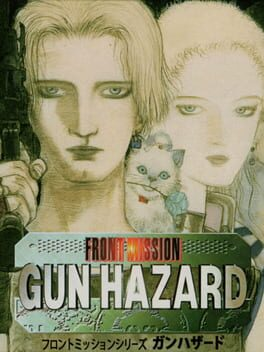Trivia Browser

▲
1
▼
According to a 2003 the Sega Meisaku series interview with the game's director/designer Noriyoshi Ohba, he was asked why the game wasn't a stealth game despite the name "Shinobi" implying the protagonist would be more stealthy. Ohba responded that this was probably due to the team wanting to show off "how cool and badass ninjas are" as they can jump higher than normal people and have stronger physiques.
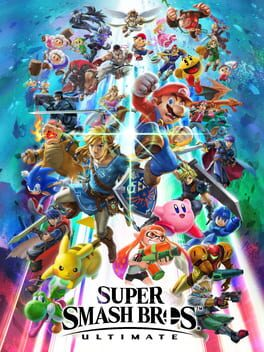
▲
1
▼
 When Kirby absorbs Sora and then uses his Magic, it is immediately clear that Kirby does not get a Keyblade of his own. Instead, Kirby uses an ethereal glowing weapon that resembles a keyblade but is entirely made out of light and sparkles that changes color depending on the spell. While this can be interpreted as being a restriction by Disney over the Keyblade's imagery, Masahiro Sakurai on Twitter chalked it up to being done for lore reasons as he said "...only Keyblade Wielders can use Keyblades..." implying that Kirby isn't "chosen" as barer of one and thus has to use the three spells differently.
When Kirby absorbs Sora and then uses his Magic, it is immediately clear that Kirby does not get a Keyblade of his own. Instead, Kirby uses an ethereal glowing weapon that resembles a keyblade but is entirely made out of light and sparkles that changes color depending on the spell. While this can be interpreted as being a restriction by Disney over the Keyblade's imagery, Masahiro Sakurai on Twitter chalked it up to being done for lore reasons as he said "...only Keyblade Wielders can use Keyblades..." implying that Kirby isn't "chosen" as barer of one and thus has to use the three spells differently.
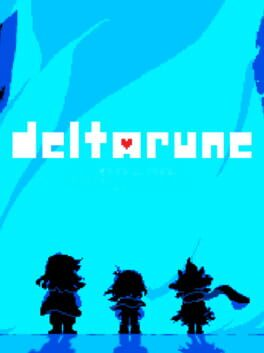
▲
1
▼
 In Chapter 2, if the player activates the Warp Door in Queen's mansion and uses it to revisit Cyber City, they will find one of the paths blocked off by an oversized toilet sprite. According to a tweet posted by Toby Fox during Chapter 2's development, the sprite was created at his request by the game's primary graphic designer Temmie Chang, only to end up absurdly large due to a miscommunication.
In Chapter 2, if the player activates the Warp Door in Queen's mansion and uses it to revisit Cyber City, they will find one of the paths blocked off by an oversized toilet sprite. According to a tweet posted by Toby Fox during Chapter 2's development, the sprite was created at his request by the game's primary graphic designer Temmie Chang, only to end up absurdly large due to a miscommunication.Furthermore, interacting with the toilet produces the message "(For some strange reason, a giant toilet-shaped toilet is blocking the way.)" This is a reference to the Iron Pencil statues in EarthBound, which produce the near-identical message "(For some weird reason, a pencil-shaped iron statue is blocking the path.)" when checked.

▲
1
▼
According to a 2001 developer interview published in V-Jump magazine, the game's character designer Tetsuya Nomura stated the main character's name, Tiida (Tidus in the international release), was the Okinawan word for "sun". After Final Fantasy VIII, the team wanted to give their next main character a brighter and more cheerful personality. Kazushige Nojima gave Tiida his name, and Nomura thought he had a "bright" motif for the character in mind considering his name's meaning.

▲
1
▼
According to a 1998 The Playstation magazine interview with the game's director Hideki Kamiya & writer Noboru Sugimura, they were asked about the chief of police character Brian Irons. Kamiya stated that he was originally going to be a normal police chief. His chubby exterior was still the same, but he would be seen properly wearing his uniform, talked like a normal officer, etc.
Sugimura credited himself as the one who made his deviant personality. Once they changed the police station building from a modern-day one to an old art museum, someone on the development team commented that it would be strange if there were medals just lying around in that place. Then Sugimura said "Well, we'll just have to make the police chief a weirdo then!", and Irons was what he came up with. He then created the character's hidden room, the idea that Chief Irons had been given bribes from Umbrella, and gave him "an insane grin on his face". Those who first saw the idea did not think it was very realistic, but Sugimura replied that "reality depends on persuasion and belief, so as long everything was consistent, it would appear real".
Kamiya stated that he was initially against turning Irons into a weirdo and protested it, but as the game's development progressed, the staff grew to like the idea and began coming up with "ridiculous details" to complement the personality shift. One example he cited are the hallway's torches leading to Irons' hidden room. The person who made it told him, "The Chief uses those to light a fire when he has his rituals!".
After confirming that Brian Irons' name appeared as a signature on the player select screen ID card in the first Resident Evil game, Kamiya revealed that wanted to use an "-ian" sound for both the first name and surname when coming up with the name, and decided that "Brian Irons" worked perfectly. He didn't think it would be anything more than just a lighthearted signature.
Sugimura commented that he didn't know that, and that when Resident Evil 2's development started the police chief was actually named Gordon until someone pointed out he was already given the name Brian Irons and stuck with it to connect it to the first game.
Sugimura credited himself as the one who made his deviant personality. Once they changed the police station building from a modern-day one to an old art museum, someone on the development team commented that it would be strange if there were medals just lying around in that place. Then Sugimura said "Well, we'll just have to make the police chief a weirdo then!", and Irons was what he came up with. He then created the character's hidden room, the idea that Chief Irons had been given bribes from Umbrella, and gave him "an insane grin on his face". Those who first saw the idea did not think it was very realistic, but Sugimura replied that "reality depends on persuasion and belief, so as long everything was consistent, it would appear real".
Kamiya stated that he was initially against turning Irons into a weirdo and protested it, but as the game's development progressed, the staff grew to like the idea and began coming up with "ridiculous details" to complement the personality shift. One example he cited are the hallway's torches leading to Irons' hidden room. The person who made it told him, "The Chief uses those to light a fire when he has his rituals!".
After confirming that Brian Irons' name appeared as a signature on the player select screen ID card in the first Resident Evil game, Kamiya revealed that wanted to use an "-ian" sound for both the first name and surname when coming up with the name, and decided that "Brian Irons" worked perfectly. He didn't think it would be anything more than just a lighthearted signature.
Sugimura commented that he didn't know that, and that when Resident Evil 2's development started the police chief was actually named Gordon until someone pointed out he was already given the name Brian Irons and stuck with it to connect it to the first game.
Franchise: Kingdom Hearts
▲
1
▼
The games' real-time action platforming aspect (in contrast to the turn-based combat of previous Square RPGs) came from a desire by series creator Tetsuya Nomura and others at Square of wanting to make a game extremely similar to and as thrilling as Super Mario 64 after they played that game and were enamored by it. However in order to make the concept stand on its own two feet, they decided to use Disney properties (which made Nomura in particular even more excited and obsessed with the project) as they believed Disney was the only thing that could compete with Nintendo and Mario.

▲
1
▼
When coming up with a name for the game and eventual series, the developers were attracted to the name "Kingdom" because, to Nomura and his team, the game's iconic premise of the different Disney movies' stories being rendered as "Worlds" for the player to visit reminded them of Disney's theme parks, such as the Magic Kingdom and Disney's Animal Kingdom, which are segmented into different "lands" or areas for visitors to explore. However, Square had difficulty in securing the name "Kingdom" alone, so they decided to add the word "Hearts" to it because such entities played an important role in the lore of the game and series.
Franchise: Kingdom Hearts
▲
1
▼
As revealed in by an interview with a head of Disney Interactive Studios in 2017, the original characters of Kingdom Hearts, such as Sora, although created by Square Enix, are wholly and entirely owned by Disney and the company can do as they please with them.

▲
1
▼
Disney heavily restricted the use of Mickey Mouse in the game especially as the central character like Square initially wanted. This was because Disney was nervous about the success of the game and did not want its possible failure leaving a black mark on the company and its mascot. Tetsuya Nomura stated that these contractual restrictions went so far as to have Disney allow Mickey to only make a minor cameo appearance (such as "in the background of a crowd" as Nomura put it). Spoiler:Nomura and his team got around this by having Mickey have an extremely important but brief role at the end of the game in the form of Mickey helping Sora close the Door to Darkness so no more Darkness gets out of it, separating the two. King Mickey even appears mostly in silhouette in this scene. When the first Kingdom Hearts became a humongous success for both Disney and Square, the former allowed the game developers to feature their mascot in a much more prominent role in the franchise from then onward.
Franchise: Double Dragon
▲
1
▼
The series struggles to maintain a consistent art style after the first game. Though fans found this inconsistency is part of their charm, the series' creator, Yoshihisa Kishimoto, had always lamented that to be the case:
"Many different people worked on Double Dragon's graphics over the years, and Technos often outsourced the game design to external companies, so there was no consistency to the branding or the quality," he says. "I personally find it unfortunate, but that's the way Technos handled its titles."
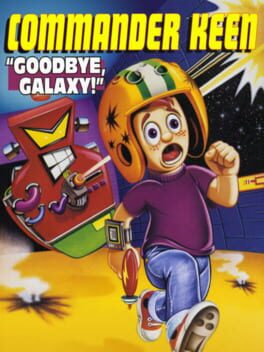
▲
2
▼
 One of the enemies in the "Secret of the Oracle" episode, Dopefish, was a "stupid little fish" created by the game's designer Tom Hall and described in-game as "the second-dumbest creature in the universe" (in reference to the dumbest creature in the universe, the Ravenous Bugblatter Beast of Traal from Douglas Adams' "The Hitchhiker's Guide to the Galaxy" franchise), and has since gone on to develop a cult following and become one of the biggest recurring in-jokes in the video game industry due to the sheer amount of games it has made appearances in (a large chunk of which having Tom Hall's involvement).
One of the enemies in the "Secret of the Oracle" episode, Dopefish, was a "stupid little fish" created by the game's designer Tom Hall and described in-game as "the second-dumbest creature in the universe" (in reference to the dumbest creature in the universe, the Ravenous Bugblatter Beast of Traal from Douglas Adams' "The Hitchhiker's Guide to the Galaxy" franchise), and has since gone on to develop a cult following and become one of the biggest recurring in-jokes in the video game industry due to the sheer amount of games it has made appearances in (a large chunk of which having Tom Hall's involvement).As of October 2021, Dopefish has made known appearances in Wacky Wheels, Rise of the Triad, Duke Nukem 3D, Shadow Warrior, Quake, Quake II, Quake III Arena, Jazz Jackrabbit 2, SiN, Descent 3, Battlezone, Kingpin, Daikatana, Anachonox, Max Payne, Hyperspace Delivery Boy, Commander Keen (2001), Return to Castle Wolfenstein, Eternal Daughter, Hitman 2: Silent Assassin, Red Faction, Congo Cube, The Frozen Throne expansion to Warcraft III: Reign of Chaos, SiN Episodes: Emergence, Chili Con Carnage, TAGAP: The Apocalyptic Game About Penguins, Fortress Forever, OFF, Dystopia, Deus Ex: Human Revolution, Pettington Park, Rocketbirds: Hardboiled Chicken, Warsow, Bombshell, Doom (2016), Wolfenstein II: The New Colossus, Ion Fury, and Doom Eternal.
Beyond video games, Dopefish notably made a cameo appearance in the animated series "Tiny Toon Adventures" in the 1992 episode "Toon TV" during the song "Toon In, Toon Out", which aired less than a year after the release of Commander Keen in "Goodbye, Galaxy!". Dopefish also cameoed in "Lakewood Plaza Turbo", the pilot episode to the 2017 animated series "OK K.O.! Let's Be Heroes".
The Official Dopefish Home Page:
http://dopefish.com/fishinfo.html
Tiny Toon Adventures - "Toon In, Toon Out":
https://www.youtube.com/watch?v=kKWD3JaCSO8#t=126
OK K.O.! Let's Be Heroes - Lakewood Plaza Turbo:
https://www.youtube.com/watch?v=SM6W8Oj-L3c#t=98
http://dopefish.com/fishinfo.html
Tiny Toon Adventures - "Toon In, Toon Out":
https://www.youtube.com/watch?v=kKWD3JaCSO8#t=126
OK K.O.! Let's Be Heroes - Lakewood Plaza Turbo:
https://www.youtube.com/watch?v=SM6W8Oj-L3c#t=98

▲
1
▼
 Updated versions of the game were distributed online via the Satellaview service in Japan; these versions support standard controllers as well as the Super NES Mouse. The "Yuushou Naizou Ban" version of the game also adds the picture "Dreaming of the Moon" by Mizota Hiroko of Tokyo, the winner of a contest associated with an earlier updated version of the game titled "Mario Paint BS-Ban".
Updated versions of the game were distributed online via the Satellaview service in Japan; these versions support standard controllers as well as the Super NES Mouse. The "Yuushou Naizou Ban" version of the game also adds the picture "Dreaming of the Moon" by Mizota Hiroko of Tokyo, the winner of a contest associated with an earlier updated version of the game titled "Mario Paint BS-Ban".

▲
1
▼
The original Japanese version of the game was partially inspired by the films by Hong Kong action star and martial artist, Bruce Lee. The creator combined elements from Lee's Enter the Dragon with that of his own life to create the game's concept.

▲
1
▼
 According to the game's planner Hideki Kamiya in an interview published in the June 1998 issue of The PlayStation (JP) magazine, the pin-up poster in the laboratory originally featured a picture of Chun-Li from the Street Fighter series, but she was ultimately replaced with a different woman due to Kamiya thinking her appearance clashed too much with the world of Resident Evil.
According to the game's planner Hideki Kamiya in an interview published in the June 1998 issue of The PlayStation (JP) magazine, the pin-up poster in the laboratory originally featured a picture of Chun-Li from the Street Fighter series, but she was ultimately replaced with a different woman due to Kamiya thinking her appearance clashed too much with the world of Resident Evil.
Franchise: Street Fighter
▲
1
▼
The Four Heavenly Kings of Shadaloo are named after the Buddhist gods of the same name who rule over each cardinal direction: north, south, east, and west.

▲
1
▼
According to series composer Yoko Shimomura in a KH Ultimania interview with the game's sound team, they believed the operatic song "Destati" was "cursed":
"In the beginning and ending of the game, there is a song with a chorus. That chorus is a phrase that expresses the dark side of Kingdom Hearts, and it was used in several songs. However, once we tried loading the chorus data in when we were creating the songs, something bad would happen. The worst thing that happened was when the electricity to the building was cut off. (laugh)"
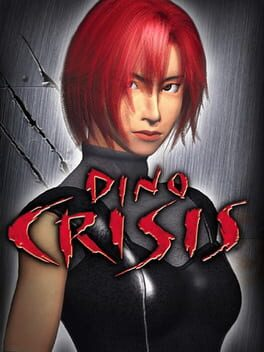
▲
1
▼
According to a 1999 interview with the Capcom team published in the game's official Japanese guide book, the team stated that the code for the locker with the shotgun parts was written on the memo next to the dying researcher was out of necessity for how the game needed to flow after they experimented with her holding several different things in that scene. Originally, she was going to be clutching a memo with Kirk's employee ID number written in her blood, as a hint to the player about who killed her.

▲
1
▼
 In the Nintendo 64 version of the game, two cheat codes can be activated on the pause menu that will each cause a picture of an unknown woman to appear in the top-right corner of the screen. Both pictures only get cleared from the screen upon returning to the main menu or changing levels, and inputting each code will cause one picture to overwrite the other:
In the Nintendo 64 version of the game, two cheat codes can be activated on the pause menu that will each cause a picture of an unknown woman to appear in the top-right corner of the screen. Both pictures only get cleared from the screen upon returning to the main menu or changing levels, and inputting each code will cause one picture to overwrite the other:•Holding L and pressing C-Left/C-Down/C-Right/C-Left/C-Down/C-Right will cause a monochrome picture of a blonde woman to appear.
•Holding L and pressing Down on the D-Pad/C-Left/C-Up will cause a color picture of a brunette woman to appear.
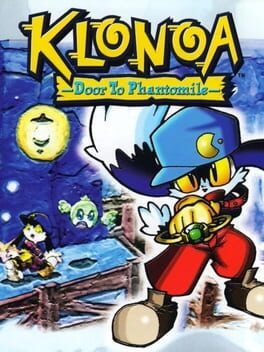
▲
1
▼
According to a 1997 The PlayStation magazine interview with the game's director Hideo Yoshizawa, he explained the story of how Klonoa's development began:
"The honest truth is that I simply wanted to make an action game. When I sat down to think seriously about how to do that, and I looked at the PlayStation market, there weren’t a lot of games that were playable for both children and adults at the same time. I wanted to make something that would fill that void."
"Also, there were a lot of Playstation games with 3D fields you could freely walk around in, and those games tended to be confusing; players often don’t know what they’re supposed to do. That’s why we decided to retain 2D controls, but with a 3D-ish feel."
"The idea for 3D backgrounds was there from the beginning, but I didn’t want it to be only for show—I wanted the 3D to have a purpose in the game. That’s where I got the idea for “information depth”. For example, in a 2D sidescroller you’ve got to keep moving forward (to the right) to see what’s next. But with a 3D screen, if we place something interesting deeper in the visual field, it prompts players to consider what’s there in the background, and explore whether it can be interacted with."
"Also, once we started playing around with camera angles, like tilting the camera upwards so players can get a clear view around them, it turned out to be really interesting. Some of these weirder camera angles have never been featured before in an action game, I think, so it was definitely something we were excited about doing."
"As I thought more about how to appeal to a wider demographic, I decided that the character shouldn’t be too serious, but should instead evoke gentle, nice feelings. That idea came, by the way, after soliciting the different developers at Namco for drawings of the character, in an informal in-house contest we held."
"Also, there were a lot of Playstation games with 3D fields you could freely walk around in, and those games tended to be confusing; players often don’t know what they’re supposed to do. That’s why we decided to retain 2D controls, but with a 3D-ish feel."
"The idea for 3D backgrounds was there from the beginning, but I didn’t want it to be only for show—I wanted the 3D to have a purpose in the game. That’s where I got the idea for “information depth”. For example, in a 2D sidescroller you’ve got to keep moving forward (to the right) to see what’s next. But with a 3D screen, if we place something interesting deeper in the visual field, it prompts players to consider what’s there in the background, and explore whether it can be interacted with."
"Also, once we started playing around with camera angles, like tilting the camera upwards so players can get a clear view around them, it turned out to be really interesting. Some of these weirder camera angles have never been featured before in an action game, I think, so it was definitely something we were excited about doing."
"As I thought more about how to appeal to a wider demographic, I decided that the character shouldn’t be too serious, but should instead evoke gentle, nice feelings. That idea came, by the way, after soliciting the different developers at Namco for drawings of the character, in an informal in-house contest we held."
